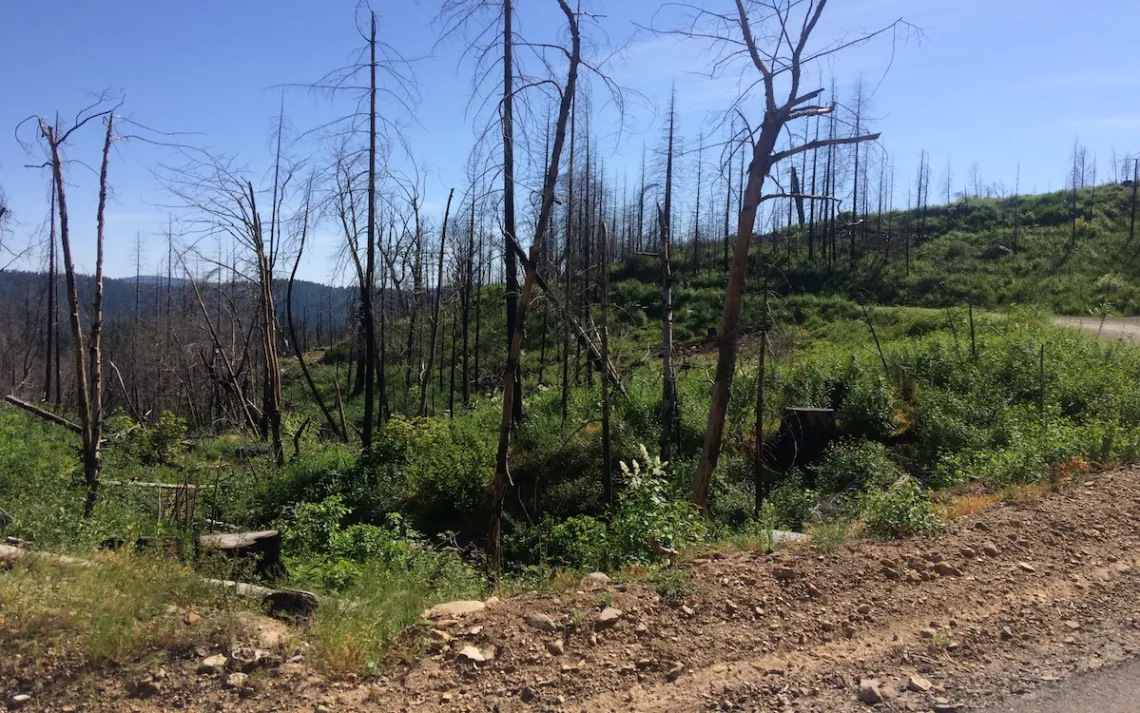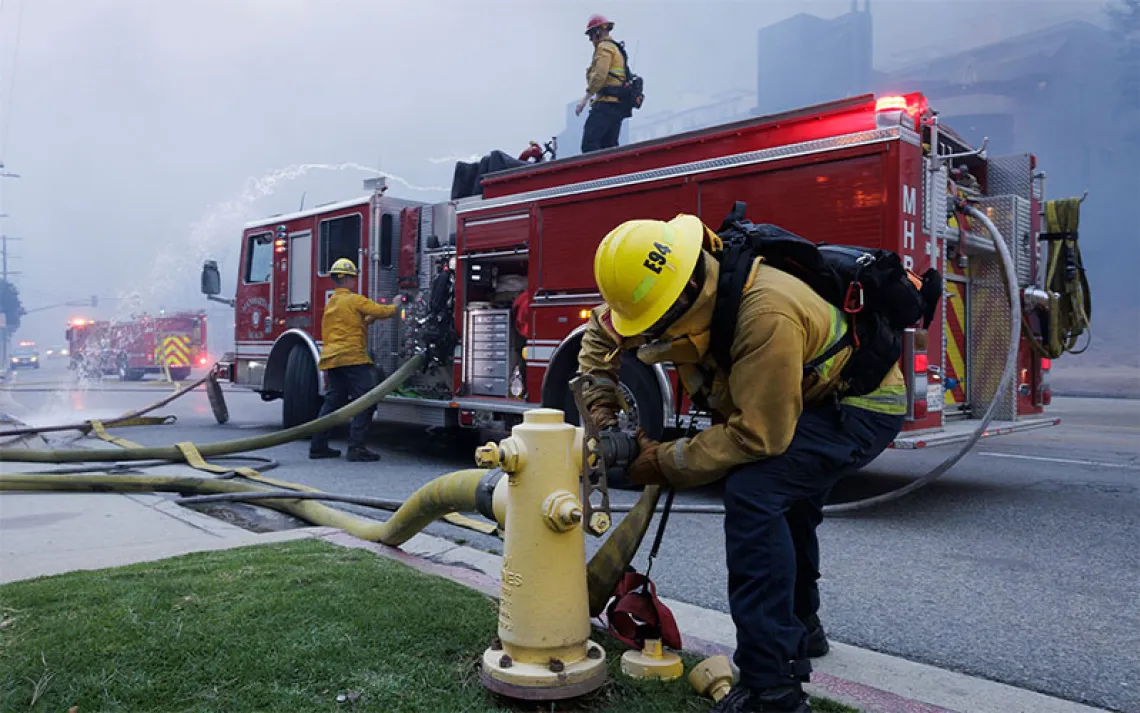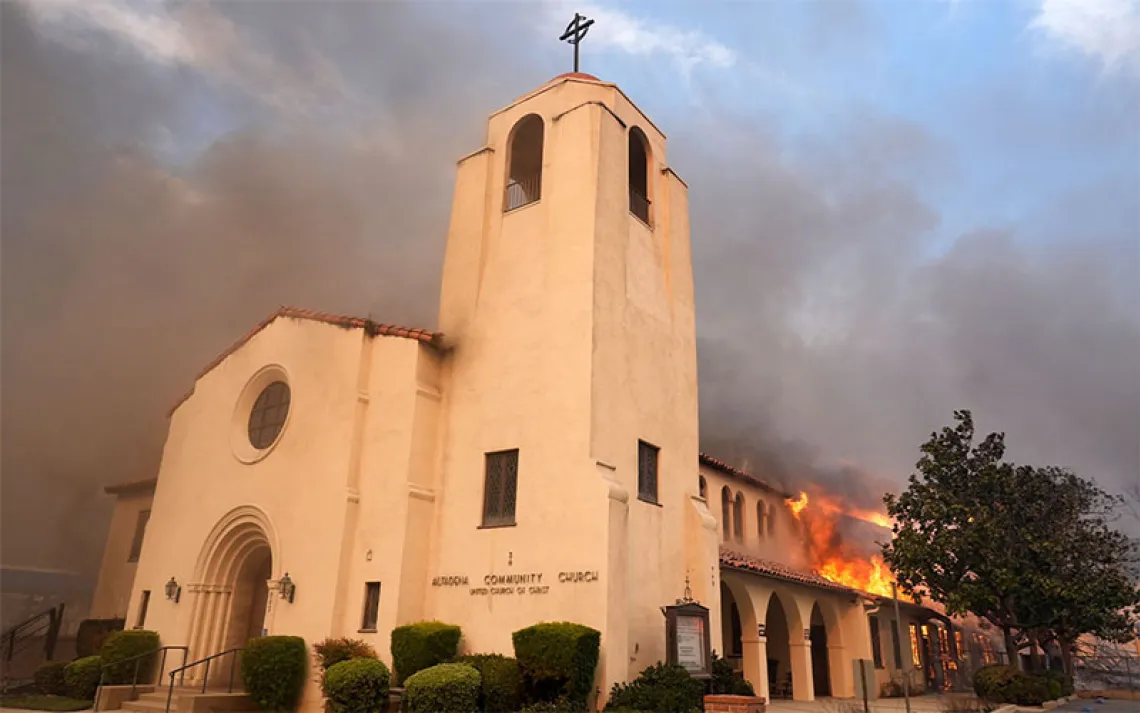A Severe Shortage of Conifer Seedlings Is Thwarting Reforestation Projects in the West
Here is what one firefighting agency, Cal Fire, is doing to respond

When Stewart McMorrow, the wildfire resilience staff chief for the California Department of Forestry and Fire Protection, or Cal Fire, received funding in 2017 to reopen a once-lauded state forest nursery, he faced a daunting challenge. “When it closed down [in 2003], everything was put away broken and dirty, just abandoned,” he said of the site in Davis, California. “The greenhouses were dilapidated.”
When he took the job in 2015, only three employees, himself included, ran the drastically scaled back reforestation operation for Cal Fire. With the nursery reopening, the pressure was on McMorrow to produce more conifer seedlings, as various stakeholders belatedly recognized the dire gap between reforestation needs following historically large wildfires and the seedlings needed to do the job.
Between 2012 and 2021, nearly 8 million acres of California forestland burned, according to Wildfire Today. That’s nearly a quarter of the state’s 32.1 million acres of forestland. In comparison, between 2002 and 2011, some 2 million acres, or 7 percent, burned in wildfires. And natural regeneration, a clearly cost-effective reforestation strategy, has become less reliable as wildfires burn hotter and larger.
A 2023 study of western forestland, for example, found that 40 percent of lands won’t be conducive to recovery following a high-severity fire, due to the incineration of mature cone-bearing trees as well as altered soil properties, among other factors. Forestlands that don’t regenerate typically convert to brush fields and remain so for decades.
Meanwhile, ambitious tree-planting campaigns, such as the World Economic Forum’s Trillion Trees Campaign, pledge massive seedling plantings to sequester heat-trapping carbon dioxide and slow changes in climate patterns. The Trillion Trees Campaign website states that tree growing is among the most cost-effective ways to remove and store carbon and that already the world’s forests absorb around 2.4 gigatons of it—about a third of all fossil fuel carbon emissions. That’s tremendous demand on what—until recently—was a shrinking number of forest nurseries. And a growing number of organizations are now sounding the alarm.
The Nature Conservancy led a 2021 study called Challenges to the Reforestation Pipeline in the United States, detailing the seedling shortage and steps for building back reforestation infrastructure. In the contiguous United States, the study stated, 128 million acres of formerly forested land could be reforested with 60 billion trees to help meet carbon sequestration and reforestation goals. But to replant even half that by 2040, a year tied to various tree-planting campaigns, annual US tree seedling production would need to more than double from the current level of 1.3 billion annually to 3 billion. And quickly, as it takes time to build nursery infrastructure and then one to two years for seedlings to grow.
“It was shocking when we looked at what the numbers were and what we need to do,” said Brian Kittler, vice president of forest restoration for American Forests, a conservation organization founded in 1875. Its 2021 report, Ramping Up Reforestation in the United States, noted the decline in government-run nurseries at a time of growing demand. Over the past few decades, eight states have closed their forest nurseries—most of them since 2005—and 14 US Forest Service nurseries closed, with six remaining.
In January, the National Academy of Sciences released a lengthy report on insufficient native seed supplies (with “seeds” shorthand for plant material including seedlings) and the threat that poses to restoration goals. The academy report noted that despite a congressional directive in 2001 for federal land agencies to develop a coordinated strategy for increasing native seed supplies, the continuing shortage shows that “its aspirations are not yet realized.”
A unique 2017 study in the journal Reforesta explored the little discussed topic of why government conifer nurseries are so often overlooked and underfunded, despite their critical role in reforestation. They’re “off the radar,” the study stated, and too often the last step considered in a reforestation project “when they should be one of the first.” In essence, the study attributed it to the misconception that “growing plants is easy.” However, it’s far from simple, and government nurseries fill a unique role that rarely pencils out for commercial nurseries.
The Davis nursery that Cal Fire’s McMorrow is now rebuilding, the LA Moran Reforestation Center, opened in 1921. It has the legislative mandate to grow quality seedlings for reforestation projects on private and state-owned lands—43 percent of the state’s forestland. The state nursery grows a variety of tree species that are genetically suited to specific regions. When planted in regions distant from where they evolved, trees often grow poorly and die prematurely. In addition, their pollen drifts into the surrounding forest, weakening the genetic fitness of seedlings from local trees.
The nursery staff also maintain quality standards to ensure vigorous seedlings with healthy root systems, essential for the seedlings to survive after planting. It operates a separate facility as well, called the state seed bank. Inside, freezers preserve seeds gathered from 85 seed zones in the state—and the 500-foot elevation bands within those zones—that are used to grow the seedling stock, in addition to serving as a genetic reservoir for the state’s forests. However, Cal Fire closed the Davis nursery in 2003 due to a funding cut. At that point, there remained another Cal Fire–run nursery in Magalia in Butte County, which opened in 1952. The Magalia nursery annually sold hundreds of thousands of seedlings, including ponderosa, Jeffrey, and sugar pine, redwoods, oaks, and incense cedar.
Then in 2010, a $3 million budget cut at Cal Fire led to its closure as well. For the first time in nearly a century, California had no state-run nurseries offering genetically suitable forest tree seedlings, along with technical advice, to aid landowners in reforestation projects after fires, disease outbreaks, or harvests, or to simply enhance the health of their land.
Harold Segelstad owns a 325-acre ranch in the Santa Cruz Mountains above Woodside, and over the years he tore out brush from the former cattle operation he bought in 1970. He and his hired hands then planted 60 acres of forestland, including redwoods and Douglas fir, with 31,000 seedlings he purchased over time from the nursery.
Segelstad said that without the state nursery, he never would have attempted his forest project, motivated by a desire to create a “sanctuary” and a “personal campaign against global climate disruption.” He said he lacked confidence in the quality and genetic suitability of seedlings from commercial nurseries. Since the 2010 closure of the Magalia site, he said he hasn’t planted any new trees and concentrates on maintaining his existing forest.
McMorrow said his team is essentially rebuilding the Davis nursery. “It’s not like a light, you just plug it back in,” he said. “We’ve had to go through the process of buying and building new greenhouses, digging new wells, reestablishing and rebuilding our electrical systems, hiring people. It’s a big project,” he said. In the midst of that, McMorrow added, they also began selling seedlings again in 2021 and were able to provide 225,000 last year to customers. “We’re a functional construction site, if you will.” The nursery website, however, notes that due to “overwhelming” demand for seedlings, orders were closed for the year.
As the nursery expands, he expects to annually grow about a million seedlings within three to five years. His staff has grown to 16, and the reforestation program has a budget of $2 million a year, which he acknowledged isn’t that much but it is more consistent than in years past. He also gets “pulses” of extra funding for building nursery capacity, including $11 million over the past two fiscal years, and an extra $2 million in the next.
The fiscal infusion enabled Cal Fire to partner with Sierra Pacific Industries to build a state-of-the-art nursery in Siskiyou County. It’s designed to grow 25 million conifer seedlings annually when it reaches full capacity, expected in three years. It’s a $10 million project, with Cal Fire putting in $3 million and Sierra Pacific $7 million.
McMorrow also gave smaller nursery grants to two Southern California land trusts and a nonprofit in Plumas County near Lassen Volcanic National Park, to supply local reforestation projects. But at this point, he said he’s out of funds for more grants.
The coordination and collaboration Congress envisioned more than 20 years ago is at least ramping up on regional levels. In California, Governor Gavin Newsom in 2018 launched a Wildfire and Forest Resilience Task Force. Its membership includes an array of stakeholders, including state and federal land agencies. It’s developing action plans with new policies and practices, and increased budgets to back them.
McMorrow took it a step further and in November launched a new group called the Reforestation Pipeline Partnership, its funding split by Cal Fire and the Forest Service and developed in conjunction with American Forests.
“This is no fault of anybody I work with right now, but we should have been focusing on this for the last 25, 30 years,” McMorrow said. “But there’s no time like right now to do the right thing.”
 The Magazine of The Sierra Club
The Magazine of The Sierra Club



